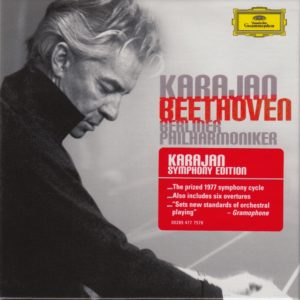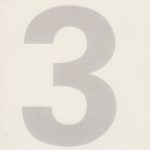 After trying and failing to find an “office” location this morning, I ended up right back where I started: home.
After trying and failing to find an “office” location this morning, I ended up right back where I started: home.
So, I made my own coffee. I ate a bowl of home-made chicken noodle soup. And I gazed out at the ducks meandering on the lake out back.
In the background, just slightly out of earshot – just as if I were at a nearby restaurant and their atrocious Emo music blasted out of too many speakers on the ceiling – I listened to the first five Kansas albums…when I wasn’t listening to Herbert von Karajan, of course.
As an added bonus, I laughed at the antics of our cat, Larry, who – when he’s hungry – will do the most outrageously naughty things to get my attention, like climb up on a forbidden horizontal surface and push something off onto the floor.
I guess Dorothy was right: There’s no place like home.
As for today’s listening fare, it’s Austrian conductor Herbert von Karjan (1908-189) again, this time from his legendary 1977 Beethoven cycle. Same orchestra (the Berliner Philharmoniker). Same record label (the equally legendary Deutsche Grammophon).
If first encountered Karajan’s 1977 cycle on Day 11, and then again on Day 29. Both times, I worried about falling into the wily snares of the Cult of Karajan, a frothing-at-the-mouth group of fans who think Herbert can do no wrong, and all other conductors must bow to his superiority.
And yet…
He’s batting .500 with his 1977 cycle.
I awarded his Day 11 performance a “Meh!” and his Day 29 performance an unequivocal “Huzzah!”
That’s not Karajan worship…is it? I mean, I’m not frothing at the mouth, not as far as I can tell, anyway.
Let’s see if today’s performance, this time of Beethoven’s Symphony No. 3 in E flat Major, is a “Meh!” or a “Huzzah!” Maybe that will reveal my thoughts on Herbert von Karajan.
But first, some insight into the recording of the 1977 cycle from Richard Osborne’s liner notes,
But it was not only individual symphonies that were re-thought in 1975-77. Individual insights came out of a new, complete overview. Initially, Karajan invited the orchestra to play through the nine symphonies twice. They were then left for several months to “rest in the mind.” After that, the real work of rehearsal and recording began; and there was further pause while the tapes were processed and assessed. Even at this late stage a new reading of the slow movement of the “Eroica” Symphony was put in place. The result of this fresh assessment was, in some instances, a return to a broader, more Germanic reading of the music than in 1961-62.
 Beethoven wrote his symphonies in four parts (except for the Sixth, which is in five). The time breakdown of this particular one (Symphony No. 3 in E flat Major), from this particular conductor (Karajan, at age 67-69) and this particular orchestra (Berliner Philharmoniker), at this particular time in history (1975-1977) on this particular record label (Deutsche Grammophon) is as follows:
Beethoven wrote his symphonies in four parts (except for the Sixth, which is in five). The time breakdown of this particular one (Symphony No. 3 in E flat Major), from this particular conductor (Karajan, at age 67-69) and this particular orchestra (Berliner Philharmoniker), at this particular time in history (1975-1977) on this particular record label (Deutsche Grammophon) is as follows:
I. Allegro con brio………………………………………………………………………13:28
II. Marcia funebre: Adagio assai……………………………………………….16:27
III. Scherzo: Allegro vivace – Trio…………………………………………………6:10
IV. Finale: Allegro molto – Poco andante – Presto…………………..11:36
Total running time: 47:01
My Rating:
Recording quality: 5 (nearly perfect; some, but hardly noticeable tape hiss, wonderful dynamic range, a lively, brisk performance)
Overall musicianship: 5
CD liner notes: 4 (slimmer booklet compared to the 1963 cycle, but no less interesting…a missing, but necessary, piece of information: when, exactly, was this recorded? Which day? Which year? Providing a range of 1975-1977 isn’t sufficient for inquiring minds like mine)
How does this make me feel: 5
I am reluctant to give this the coveted “Huzzah!” rating.
But “Huzzah!” I must.
I can find no fault with this recording or this performance.
The instruments were clear and vibrant. The pace was nice and quick (but not overly so). I was captivated from the opening two chords.
Have a listen. Perhaps you will agree.
